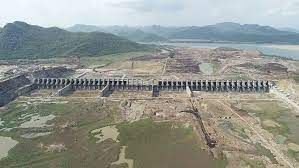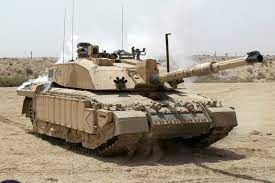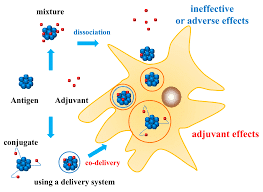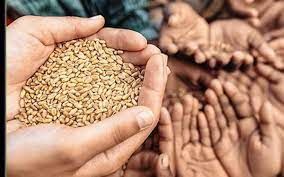UPSC Daily Current Affairs - 29th March 2023 | Current Affairs & Hindu Analysis: Daily, Weekly & Monthly PDF Download
GS-I
Polavaram Irrigation Project

Why in News?
Union Minister of State for Statistics and Programme Implementation recently informed that Polavaram Irrigation Project in Andhra Pradesh has a cost overrun of Rs 45,397 crore.
About Polavaram Irrigation Project:
- It is an under-construction multi-purpose irrigation project on the Godavari River in the Eluru District and East Godavari District in Andhra Pradesh.
- The project has been accorded National project status by the Union Government of India.
- Objectives:
- Development of Irrigation, Hydropower and drinking water facilities in East Godavari, Vishakhapatnam, West Godavari and Krishna districts of Andhra Pradesh.
- The project envisages the generation of 960 MW of hydropower, drinking water supply to a population of 28.50 lacks in 611 villages
- The ultimate irrigation potential of the project is 4.368 lakh ha.
- The project implements the Godavari-Krishna link under the Interlinking of rivers project. It envisages the transfer of 80TMC of surplus Godavari water to river Krishna which will be shared between Andhra Pradesh, Karnataka and Maharashtra.
Source: Indian Express
Z-Morh Tunnel
Why in News?
Union Minister for Road Transport and Highways said that the crucial Z-Morh tunnel will be inaugurated soon.
About Z-Morh Tunnel:
- It is an under-construction 2-lane road tunnel between Gagangir and Sonamarg on the Srinagar-Leh Highway in Jammu and Kashmir.
- It is named for the Z-shaped stretch of road between Sonamarg and Gagangir that the tunnel will replace.
- Length: 6.5 km
- Elevation: 8,960 feet.
- The tunnel is designed for the flow of 1,000 vehicles an hour at an approved maximum speed of 80 km per hour.
- Importance:
- At 8,960 feet, tourist destination Sonmarg is covered in snow during the winter season, forcing locals to shift to Srinagar. Z-Morh tunnel will ensure that Sonmarg town in Jammu & Kashmir remains connected as well as supplies are maintained all year round.
- It will ensure all-weather connectivity between Srinagar in Jammu and Kashmir and Kargil in Ladakh.
- Strategic Importance: Along with the 14.15 km Zojila Tunnel to its east, it aims to enhance the Indian military’s capabilities in Kashmir and Ladakh along both the Line of Control (LOC) to the north and the Line of Actual Control (LAC) further east.
Source: The Hindu
India’s WTO Challenge on MSP Programs for Food Grain
Why in News?
India has been criticized at the World Trade Organization (WTO) for not adequately addressing questions raised by members regarding its Minimum Support Price (MSP) programs for food grain, particularly rice.
Genesis of the row
- WTO members such as the US, Australia, Canada, the EU, and Thailand have alleged that India did not provide sufficient responses during consultations.
- The MSP programs have breached prescribed subsidy limits and are under scrutiny at the WTO argued these countries.
- With this, India became the first country to invoke the Bali ‘peace clause’ to justify exceeding its 10% ceiling for rice support in 2018-2019 and 2019-2020.
What is ‘Bali Peace Clause’?
- India’s minimum support price (MSP) falls under the amber box subsidies category.
- India has exceeded its limits for amber box subsidies for rice for two consecutive years, which is why it has been challenged at the WTO.
- The Bali ‘peace clause’ allows developing countries to exceed their 10% ceiling without facing legal action by other members.
- However, it is subject to numerous conditions, such as not distorting global trade and not affecting food security of other members.
- India’s MSP programs are subject to the ‘peace clause’, but some WTO members have accused India of habitually not including all required information in its notifications.
Allegations of Inadequate Reporting by India
- WTO members have been accusing India of not reporting all public stockholding programs under the ‘peace clause’.
- Some members have pointed out that India also lacks an adequate monitoring mechanism to ensure that no stocks are exported.
- India, on the other hand, argues that it is not obligated to notify any public stockholding programs other than for the crop where the subsidy limits were breached.
Impact on India’s MSP Programs
- The criticism from WTO members could have an impact on India’s MSP programs for food grain, particularly rice.
- The conditions set under the ‘peace clause’ could limit India’s ability to exceed the subsidy limits and support its farmers.
- India may have to provide more detailed notifications and monitoring mechanisms to address the concerns of other members and ensure compliance with WTO regulations.
Why is India defending its stance on MSPs?
- India faces several challenges in the agricultural sector, including climate change, soil degradation, and water scarcity.
- The country also has to deal with farmers’ distress due to low prices for their produce, which is why the MSP program was introduced in the first place.
- The challenge posed by the WTO to the MSP program could further exacerbate the problems faced by Indian farmers.
Back2Basics: WTO and its Subsidies Boxes
The World Trade Organization (WTO) is an intergovernmental organization that is responsible for regulating international trade between nations.
- Establishment: It was established on January 1, 1995, and currently has 164 member countries.
- Objective: To ensure that trade flows as smoothly, predictably, and freely as possible.
- Frameworks: Negotiating and formalizing trade agreements, resolving trade disputes between member countries, and monitoring national trade policies.
- Working principles: Non-discrimination, transparency, and fairness in international trade.
The WTO has three types of subsidy boxes – green, blue, and amber. Each box represents a different level of trade-distorting subsidies.
- Green box subsidies: These subsidies are considered non-trade-distorting and are allowed under WTO rules. They include measures such as research, disease control, and infrastructure development.
- Blue box subsidies: These subsidies are considered less trade-distorting than amber box subsidies but can still distort trade to some extent. They include measures such as direct payments to farmers to reduce production, provided that certain conditions are met, such as the use of fixed areas or yields.
- Amber box subsidies: These subsidies are considered the most trade-distorting and are subject to reduction commitments under the WTO Agreement on Agriculture. They include measures such as price support, input subsidies, and direct payments that are not subject to certain conditions.
Source: Indian Express
Citizen-Centric Governance: Important Aspects of Development In Any Democracy

Why in News?
Citizen-centric governance is an evolving concept, and to put it into action requires clarity in the actions that civil servants perform and how citizens engage with the state. Citizen engagement is about collaborative partnerships and dialogue and must involve all stakeholders to ensure the overall development of a community or a nation.
Citizen-Centric Governance
- Paradigm shift in traditional governance: Citizen-centric governance refers to a paradigm shift in the traditional governance structures where the focus is shifted from the power holders to the citizens.
- Access to information and services to citizens: Traditionally, governance structures hold the power to make decisions that affect the lives of citizens. But citizen-centric governance focuses on providing citizens with access to information, services, and resources and on engaging them in the policy-making process.
- Increased citizen participation: The objective of citizen-centric governance is to increase citizen participation in decision-making processes
Mission Karmayogi
- Capacity building of civil servants: Mission Karmayogi, the National Programme for Civil Services Capacity Building has been strategically working to build the capacities of civil servants through various innovative interventions to sensitise and reframe the fabric of citizen participation.
- karmachari to karmayogi: Today, thousands of railway employees, Gramin Dak Sevaks, police personnel in the UTs and employees of BSNL are all going through an outcome-based capacity-building programme that is shifting them from thinking like a karmachari to acting like a karmayogi.
Citizen Engagement
- Citizen engagement refers to how citizens participate in the political, social and economic aspects of their community or society.
- Citizen engagement is highly embedded in the nature of the political and governance context and existing power relations.
- It needs to be understood as a core component of any governance system, and in democracies, citizen engagement is a basic principle because it is understood that governments derive their authority and power from the people.
What the multi-stakeholder engagement requires?
- Constructive dialogue: Development by the people and for the people is indeed possible. Citizen engagement towards democratising the process of development necessarily involves a constructive dialogue between and amongst all stakeholders.
- Mutual trust and respect: Meaningful dialogue among the stakeholders the state, citizenry, private sector, media, civil society and academia can sustain only when there is mutual trust. The relationship between these multiple stakeholders needs to be driven by mutual respect and an appreciation of interdependence and reciprocity.
- Redrawing boundaries of engagement: However, this may involve redrawing boundaries of engagement and roles that stakeholders have traditionally assumed for themselves.
- Partnership approach: The multi-stakeholder engagement would require the adoption of the partnership approach by all parties involved.
Conclusion
Citizen-centric governance and citizen engagement are important aspects of development in any democracy. By adopting a partnership approach and mutual respect for each other’s roles, stakeholders can work together to ensure the overall development of a community and nation at large. The Indian government’s program, Mission Karmayogi, is a right step towards building the capacities of civil servants and sensitizing them to citizen participation.
Source: Indian Express
GS-III
What is Challenger 2 Main Battle Tank?

Why in News?
The first British Challenger 2 main battle tank recently arrived in Ukraine.
About Challenger 2 Main Battle Tank:
- It is the British Army’s main battle tank (MBT).
- It is a third-generation MBT, the same generation as the Russian T-80 and T-90 tanks.
- It is heavily armoured and highly mobile, designed for use in direct fire zones.
- Whilst its primary role is to destroy or neutralise armour, Challenger 2 can operate across a spectrum of high-intensity conflict, counter-insurgency and peacekeeping roles.
- Countries using: It is in service with the United Kingdom (386) and Oman (38).
- Features:
- The armour of the Challenger-2 is called the Chobham armour or the Dorchester armour and is considered among the best in the world.
- The tank is 27 feet long and eight feet tall.
- It has a range of 547 kilometres with a maximum speed of 59 kilometres per hour.
- It is armed with a rifled Royal Ordnance L30 120-mm main gun, which can deliver main armament rounds up to a range of around four kilometres.
- The secondary armament consists of two 7.62 mm machine guns.
Source: DownToEarth
What are Adjuvants?

Why in News?
A Chinese research team recently created two novel broad-spectrum adjuvants that can dramatically boost the immune response to vaccines using computer-aided molecular design and machine learning.
About Adjuvants:
- What is it? An adjuvant is a substance that is added to a vaccine to stimulate and enhance the magnitude and durability of the immune response.
- They are commonly used to improve the effectiveness of a vaccine.
- Adjuvants allow for lesser quantities of the vaccine and fewer doses.
- Generally, they are injected alongside an antigen to help the immune system generate antibodies that fight the antigen.
- Adjuvanted vaccines can cause more local reactions (such as redness, swelling, and pain at the injection site) and more systemic reactions (such as fever, chills and body aches) than non-adjuvanted vaccines.
- Example: Aluminum adjuvants are used in vaccines such as hepatitis A, hepatitis B, diphtheria-tetanus-containing vaccines etc.
Source: PIB
What is TRAPPIST-1 b?
Why in News?
New observations from the James Webb Space Telescope reveal that TRAPPIST-1b is unlikely to have an atmosphere wrapped around its rocky body.
About TRAPPIST-1 b:
- It is a hot rocky exoplanet orbiting an ultracool red dwarf star TRAPPIST-1.
- It is the innermost of seven known planets in the TRAPPIST-1 system.
- It has 1.4 times the mass and 1.1 times the radius of Earth.
- It orbits its star at a distance of 0.011 astronomical unit (AU), completing one circuit in just 1.51 Earth days.
- It receives about four times the amount of energy that Earth gets from the Sun.
- TRAPPIST-1b is tidally locked, meaning that one side of the planet always faces the star, and one side looks away.
What is an astronomical unit (AU)?
- An AU is the average distance between Earth and the Sun, which is about 93 million miles or 150 million kilometres.
- It is usually used to measure distances within our Solar System.
Source: The Hindu
|
38 videos|5349 docs|1132 tests
|
FAQs on UPSC Daily Current Affairs - 29th March 2023 - Current Affairs & Hindu Analysis: Daily, Weekly & Monthly
| 1. What is GS-I and GS-III in UPSC exams? |  |
| 2. What is the significance of the UPSC Daily Current Affairs in the exam preparation? |  |
| 3. How can I access the UPSC Daily Current Affairs? |  |
| 4. Are the UPSC Daily Current Affairs sufficient for exam preparation? |  |
| 5. How can I effectively utilize the UPSC Daily Current Affairs in my preparation strategy? |  |
























